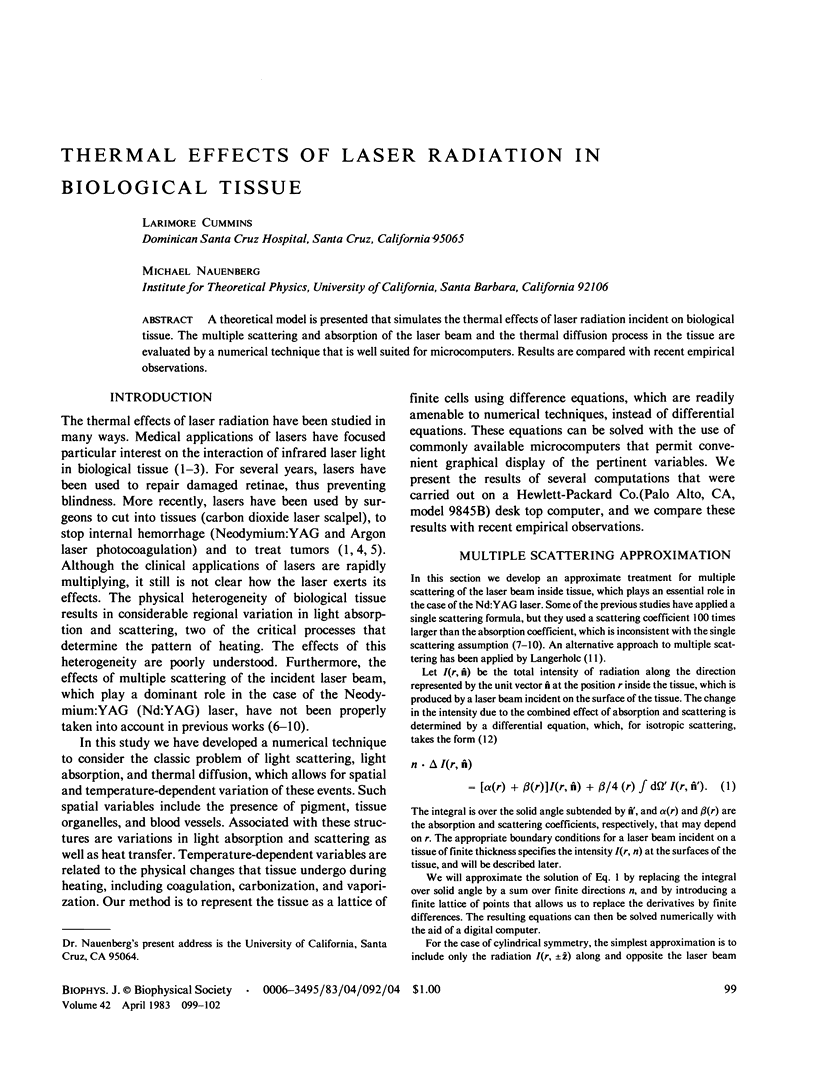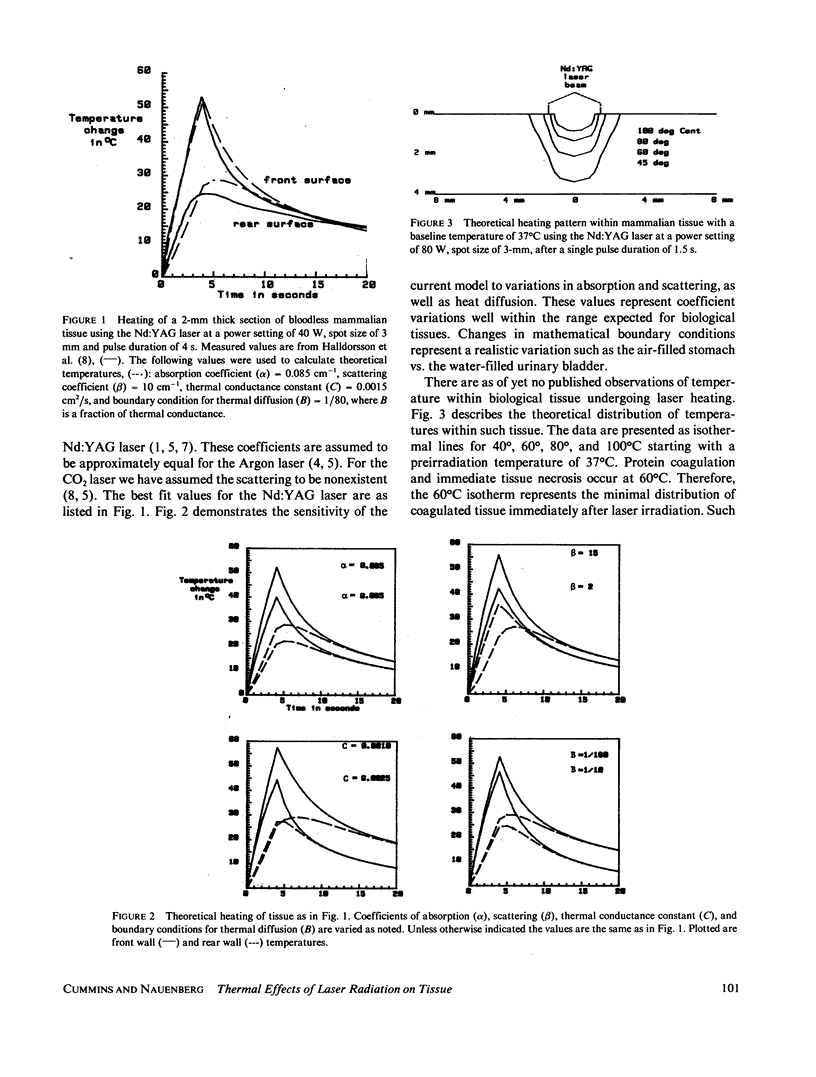Abstract
A theoretical model is presented that simulates the thermal effects of laser radiation incident on biological tissue. The multiple scattering and absorption of the laser beam and the thermal diffusion process in the tissue are evaluated by a numerical technique that is well suited for microcomputers. Results are compared with recent empirical observations.
Full text
PDF



Selected References
These references are in PubMed. This may not be the complete list of references from this article.
- Anderson R. R., Parrish J. A. Microvasculature can be selectively damaged using dye lasers: a basic theory and experimental evidence in human skin. Lasers Surg Med. 1981;1(3):263–276. doi: 10.1002/lsm.1900010310. [DOI] [PubMed] [Google Scholar]
- Bellina J. H., Seto Y. J. Pathological and physical investigations into CO2 laser - tissue interactions with specific emphasis on cervical intraepithelial neoplasm. Lasers Surg Med. 1980;1(1):47–69. doi: 10.1002/lsm.1900010107. [DOI] [PubMed] [Google Scholar]
- Halldórsson T., Rother W., Langerholc J., Frank F. Theoretical and experimental investigations prove Nd: YAG laser treatment to be safe. Lasers Surg Med. 1981;1(3):253–262. doi: 10.1002/lsm.1900010309. [DOI] [PubMed] [Google Scholar]
- Johnston J. H., Jensen D. M., Mautner W., Elashoff J. YAG laser treatment of experimental bleeding canine gastric ulcers. Gastroenterology. 1980 Dec;79(6):1252–1261. [PubMed] [Google Scholar]
- Kiefhaber P., Nath G., Moritz K. Endoscopical control of massive gastrointestinal hemorrhage by irradiation with a high-power Neodymium-Yag laser. Prog Surg. 1977;15:140–155. doi: 10.1159/000399583. [DOI] [PubMed] [Google Scholar]


